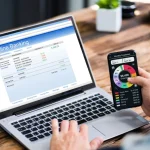
Generally, self-employed taxpayers will receive their first 2021 estimated tax payment due May 17, 2021. Due to the ongoing challenges of the coronavirus pandemic, the IRS has extended this deadline. If you received a large tax refund this year, you may want to adjust your withholding and estimated tax payments to reduce your overall tax liability. Here are some tips to help you file your tax return. Let us take a closer look at how you can maximize your refund.
First, remember that filing online will expedite the refund processing. You can expect to receive your refund in as little as 21 days if you file electronically. If you file your return on paper, however, you may have to wait 12 weeks. In both cases, delays may occur because of mistakes, budget cuts, or overworked tax preparers. However, refund timelines are just estimates and may change. If you need the money immediately, you may want to consider taking out a refund anticipation loan. Just keep in mind that this may come with a high interest and will require a higher fee than filing online.
Refunds are typically the difference between the amount of taxes you paid and the amount you owe. An employer may have withheld too much from your paycheck, resulting in an overpayment. Likewise, if you are self-employed, you may receive a refund for overpaid quarterly taxes. Refunds are also a result of refundable tax credits. The government wants to make up for this loss by restoring this money to taxpayers.
Another way to track the status of your refund is by applying for a RAL. These loans typically are seven to 14 days long and are secured by your upcoming tax refund. If your refund is delayed or lower than anticipated, you can end up with a significant debt burden. This can have devastating consequences for your credit score. However, if you do decide to apply for a RAL, make sure to research your options carefully before you sign on the dotted line.
Refunds are issued in paper checks or as a direct deposit to your bank account. While paper checks may be faster, direct deposits are easier and faster. If you are eligible to receive a direct deposit, the government will transfer your refund directly into your bank account. However, if you overpaid, be sure to choose direct deposit. The fastest way to receive your refund is to select direct deposit. Alternatively, you can use the money to purchase U.S. Series I savings bonds or U.S. Series I bonds.
Filing a tax return is not as easy as it may seem. In New Zealand, an employer deducts income tax, but this information is not automatically processed. Individual earners can obtain a summary of their earnings to determine if they have paid more tax than they owed. To file for a personal tax summary, you can file with the IRD directly or through a Tax Agent. The IRS deadline for filing taxes for the year 2019 is April 15.






